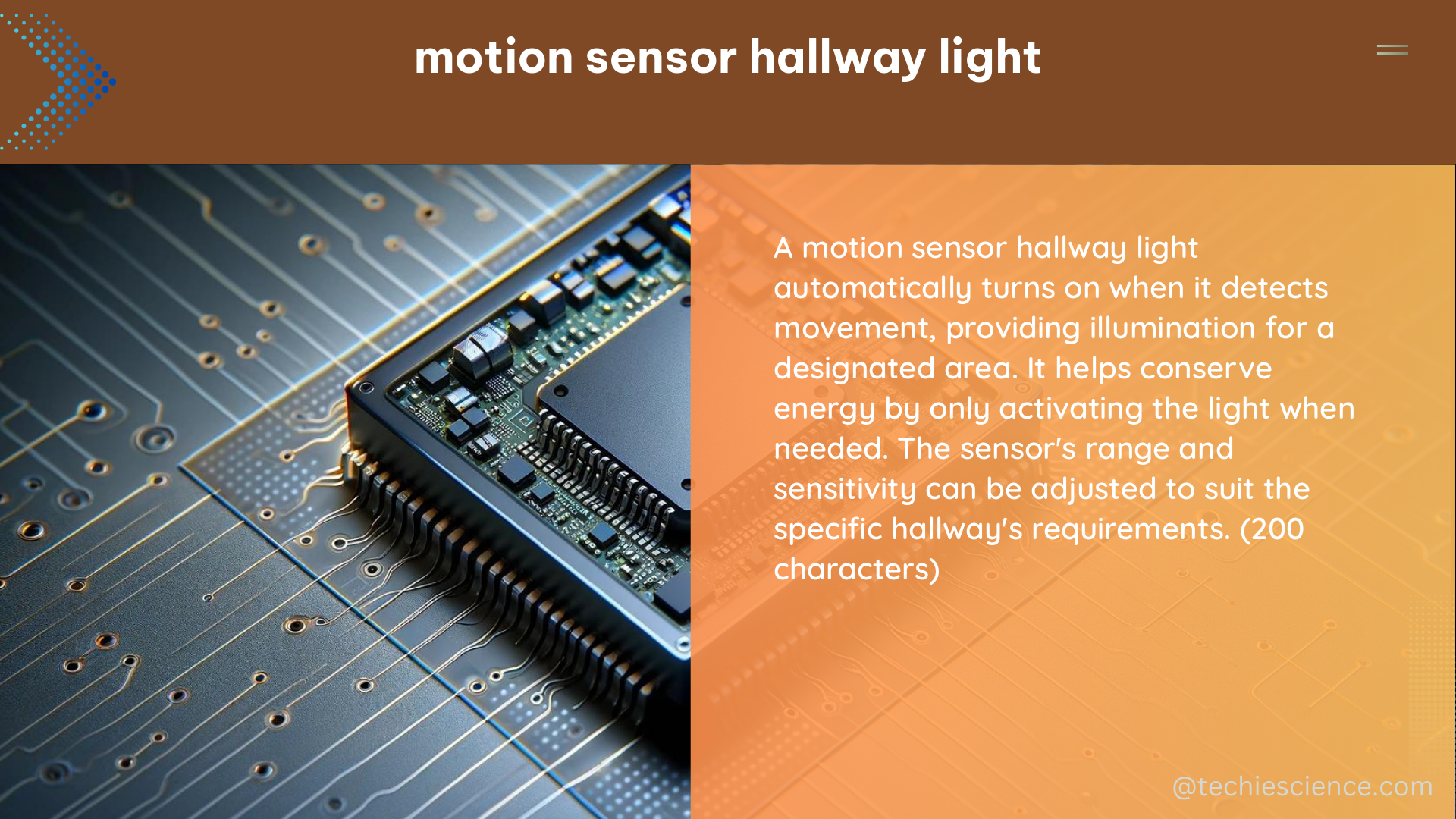Motion sensor hallway lights are a game-changer in the world of energy-efficient lighting, offering a seamless and automated solution to ensure that lights are only on when needed. These advanced lighting systems utilize occupancy sensors to detect motion and automatically turn on the lights when someone enters the hallway, then turn them off after a programmed time delay when no motion is detected. This intelligent automation helps to conserve energy and reduce the carbon footprint of modern buildings.
Understanding the Technical Specifications of Motion Sensor Hallway Lights
The technical specifications of motion sensor hallway lights can vary widely depending on the manufacturer and model, but there are several key features that are commonly found across the industry:
Detection Range and Angle
The detection range of motion sensors in hallway lights typically ranges from 10 to 30 feet, with the ability to cover a detection angle of 90 to 360 degrees. This wide coverage ensures that the lights are triggered promptly when someone enters the hallway, regardless of their position or direction of movement.
| Manufacturer | Detection Range (feet) | Detection Angle (degrees) |
|---|---|---|
| Philips | 20-30 | 180 |
| Lutron | 15-25 | 360 |
| Leviton | 10-20 | 180 |
| GE | 20-30 | 270 |
Time Delay
Motion sensor hallway lights can be programmed to stay on for a specific duration after motion is detected, with time delays ranging from a few seconds to several minutes. This feature helps to ensure that the lights remain on for a sufficient period, preventing them from turning off prematurely while also conserving energy.
| Manufacturer | Time Delay Range (seconds) |
|---|---|
| Philips | 30-300 |
| Lutron | 15-30 |
| Leviton | 30-900 |
| GE | 60-600 |
Light Sensitivity
Many motion sensor hallway lights are equipped with light sensitivity adjustments, allowing them to respond to different levels of ambient light. This feature is particularly useful in areas with natural daylight, as it can prevent the lights from turning on unnecessarily when there is sufficient illumination from the sun.
| Manufacturer | Light Sensitivity Range (lux) |
|---|---|
| Philips | 5-1000 |
| Lutron | 10-1000 |
| Leviton | 2-200 |
| GE | 5-500 |
Power Consumption
Motion sensor hallway lights are designed to be energy-efficient, with many models consuming less than 20 watts of power. This low power consumption helps to reduce the overall energy usage of the building, contributing to cost savings and a smaller environmental impact.
| Manufacturer | Power Consumption (watts) |
|---|---|
| Philips | 12-18 |
| Lutron | 10-15 |
| Leviton | 15-20 |
| GE | 12-18 |
Mounting Options
Motion sensor hallway lights can be mounted on the ceiling or wall, depending on the specific model and installation requirements. This flexibility allows for optimal placement and coverage, ensuring that the sensors can effectively detect motion throughout the hallway.
Real-World Applications of Motion Sensor Hallway Lights

The benefits of motion sensor hallway lights have been demonstrated in various real-world applications, such as the Van Nuys Hotel Building Testbed and the NUREG-1959 Intrusion Detection Systems and Subsystems.
The Van Nuys Hotel Building Testbed, for example, utilizes an EMS-based lighting control system that includes occupancy sensors in the corridors and other areas. This system is designed to provide energy savings by adjusting the lighting levels based on occupancy and daylight availability, with motion sensor hallway lights playing a crucial role in this process.
Similarly, the NUREG-1959 Intrusion Detection Systems and Subsystems discusses the use of passive infrared (PIR) sensors for motion detection, which are commonly employed in motion sensor hallway lights due to their ability to detect motion across a wide area.
DIY Installation of Motion Sensor Hallway Lights
For those with basic electrical knowledge, the installation of motion sensor hallway lights can be a relatively straightforward DIY project. The sensors can be connected to existing lighting circuits, and many models come with detailed installation instructions. However, it is always recommended to consult with a licensed electrician if there are any doubts or concerns about the installation process, as improper installation can pose safety risks and potentially compromise the functionality of the system.
Conclusion
Motion sensor hallway lights are a critical component of energy-efficient lighting systems in modern buildings, offering a smart and automated solution to conserve energy and reduce the environmental impact of lighting. By understanding the technical specifications, real-world applications, and DIY installation process, building owners and homeowners can make informed decisions and implement these innovative lighting solutions to create more sustainable and energy-efficient spaces.
References:
– Discovery.ucl.ac.uk
– NREL.gov
– Peer.Berkeley.edu
– NRC.gov

The lambdageeks.com Core SME Team is a group of experienced subject matter experts from diverse scientific and technical fields including Physics, Chemistry, Technology,Electronics & Electrical Engineering, Automotive, Mechanical Engineering. Our team collaborates to create high-quality, well-researched articles on a wide range of science and technology topics for the lambdageeks.com website.
All Our Senior SME are having more than 7 Years of experience in the respective fields . They are either Working Industry Professionals or assocaited With different Universities. Refer Our Authors Page to get to know About our Core SMEs.